These seabirds are the harbingers of changing oceans. Studying them involves lots of poop.
Seven miles into the Gulf of Maine live thousands of very protective parents.
They divebomb and defecate. They bombard anyone perceived as a threat to their offspring. All the while, a high-pitched mayhem of shrieks swells in volume and fills the salty air.
If you're thinking that doesn't sound human, you're right.
They're terns: little vivacious, but aggressive, seabirds that spend their summers breeding off the New England coast. And in addition to being possessive, helicopter parents, they may also be some of the best indicators of how our oceans are changing.
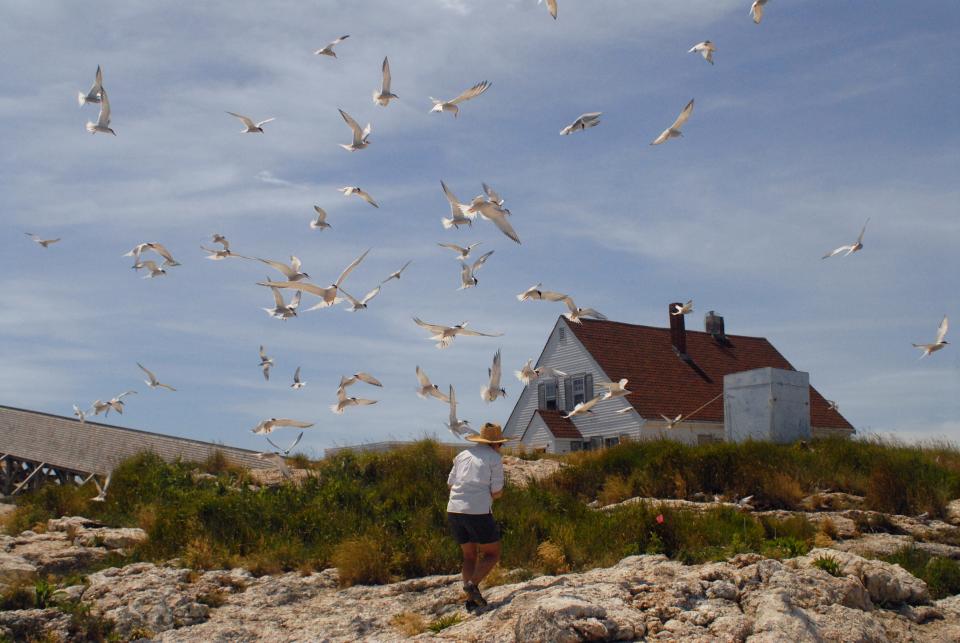
Welcome to the tern breeding colony at the Isles of Shoals, a network of islands off the coast of New Hampshire and Maine. Here, three lone researchers live on White Island for the summer studying these gregarious birds that serve as harbingers of sea life in the Gulf of Maine.
It's not a lost pet: Do you know about wild monk parakeets in New England?
Help owls and eagles: Rat poisons are killing New England's birds of prey
Jennifer Seavey, executive director of the Shoals Marine Laboratory, called terns "flying fisheries biologists" that are constantly sampling the environment, providing researchers with incredibly rich datasets.
"Seabirds are excellent indicators of marine health," she said.
Part research, part conservation, Shoals Marine Laboratory, a joint venture between the University of New Hampshire and Cornell University, manages the tern colony.
What can terns tell us about our changing oceans?
The black-capped, orange-beaked terns can tell us a lot about the ocean, not just locally, but around the world.
The terns' annual trip north is part of 60,000 global miles they fly each year, spending winters as far south as Argentina and Brazil. Masses of them find their way back to New England's coastline every summer, choosing to breed at places such as White Island and Massachusetts' Monomoy National Wildlife Refuge off Cape Cod, which sees the largest common tern population along the Atlantic seaboard.
"They're super international," said Elizabeth Craig, director of seabird research at the Shoals Marine Laboratory. "They travel across the globe. And they inspire stakeholders wherever they go."
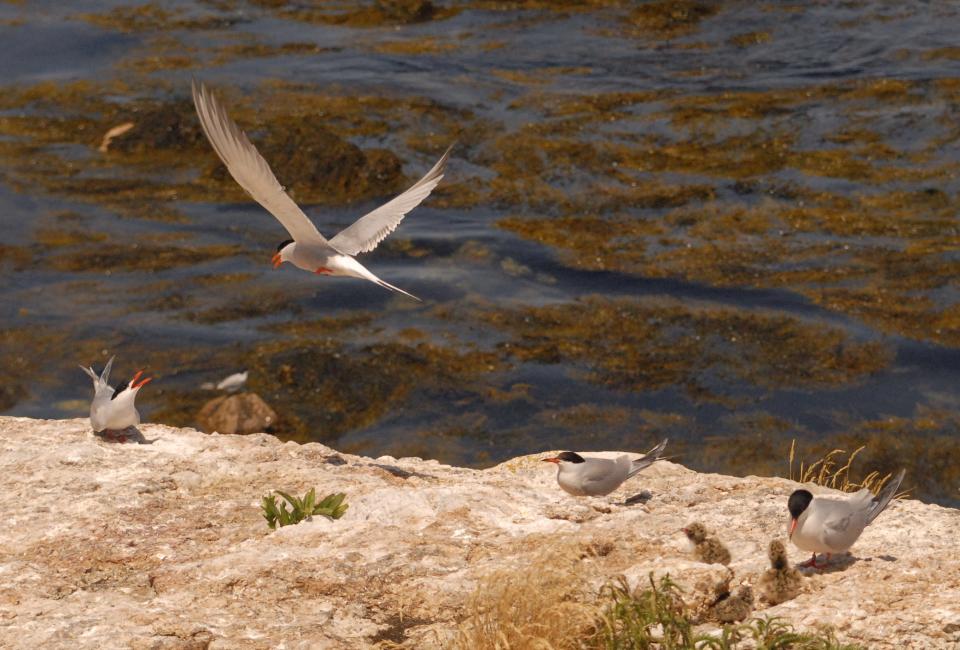
Craig is "the" tern lady, the consistent presence who returns to White Island each summer ahead of the terns' arrival. She's been working with these birds for years and knows every inch of the rocky mass where she cohabitates with them.
While some of the ocean's top predators like whales, seals and sharks are difficult for humans to study up close, terns are fairly accessible and nest in the thousands, providing scientists an opportunity to learn more about how climate change is playing out underneath the choppy, indigo waves. Mainly, they can study what terns are eating and bringing back to their chicks.
Bird flu: What's causing so many seabirds to turn up dead on RI beaches?
Many of the adult terns on White Island have GPS tags, so researchers can identify fishing hotspots and how far the birds travel. They recently tracked fishing activity around Plum Island in Newburyport, Massachusetts, for example.
"These birds are capturing the fish, and we're observing the birds," said Craig. "We can learn about what's coming down the pipeline."
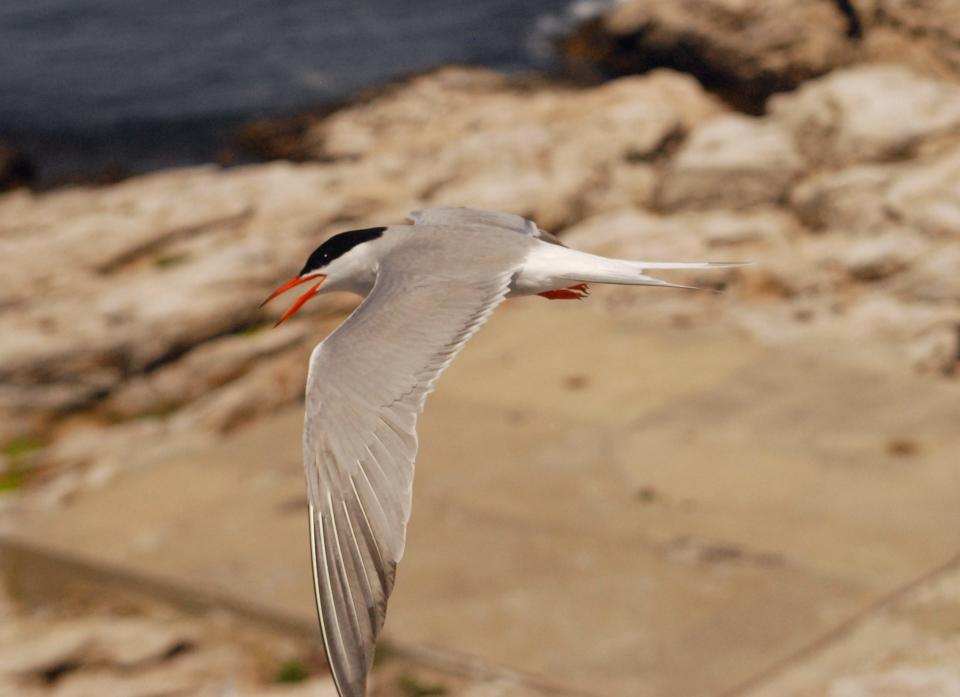
And with the Gulf of Maine specifically undergoing accelerated change, terns could be giving scientists a look into the future. "That particular bird in that particular colony is really valuable," said Seavey.
The National Oceanic and Atmospheric Administration is already using data from terns in its fisheries management and monitoring activities, she said.
Heating up: Why is Gulf of Maine warming setting records? The future of local ocean waters.
Terns can live into their 30s, which means they're capturing fluctuations in the environment in their lifetimes. Scientists can study how they're adapting, if at all.
Craig and her fellow researchers routinely collect excrement, feathers and regurgitated bones, which Cornell University uses to do DNA analysis on the digested fish.
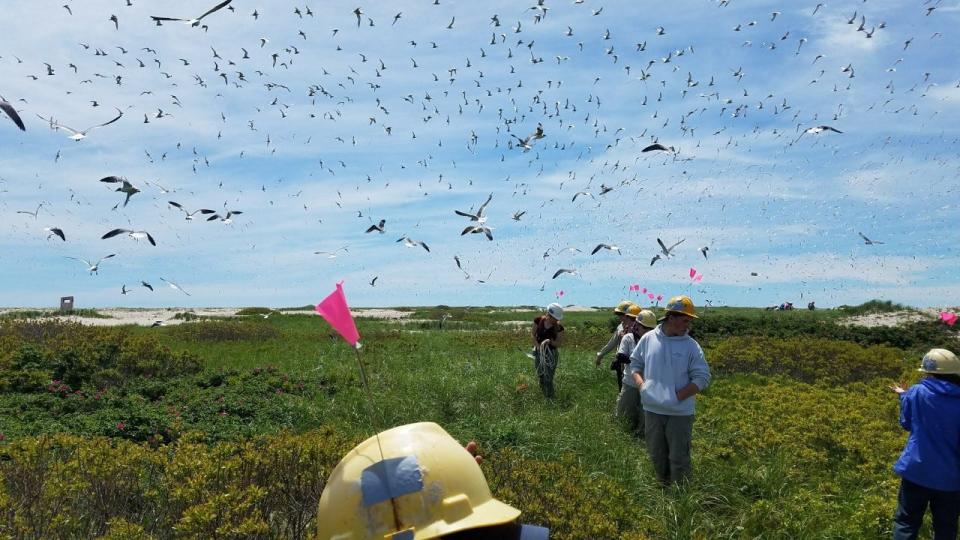
Studying terns has alerted scientists to the emergence of butterfish in local waters, a species that's moving farther north because of warming ocean temperatures.
Butterfish are "of concern," said Theresa Rizza, a seasonal seabird technician with Shoals Marine Laboratory, because they're too big to feed young terns. They physically won't fit in their mouths.
NOAA says: New England's temps are warming, sea levels rising faster than the global rate
But if these environmental changes persist, butterfish could become the available food, especially if terns' usual choices like herring and hake search for colder, deeper waters. This climate-driven shift in fish distribution could ultimately prove harmful to seabird populations.
From hake to skate: Behind the push to bring 'unknown' fish to New England's dinner table
Meet the women studying terns on White Island
People love birds, sure, but living with them en masse? The three-month gig on White Island is certainly not for everyone: the job listing for seasonal seabird technicians specified "solar electricity, composting toilets and no running water."
Craig, Rizza and Olivia Smith are the three solitary residents at rugged White Island this summer, along with two boat-savvy dogs named Sunny and Louise. The women take turns heading back to the mainland for a few days at a time. They come back with toilet paper — which they call "island money" — and food in tow.
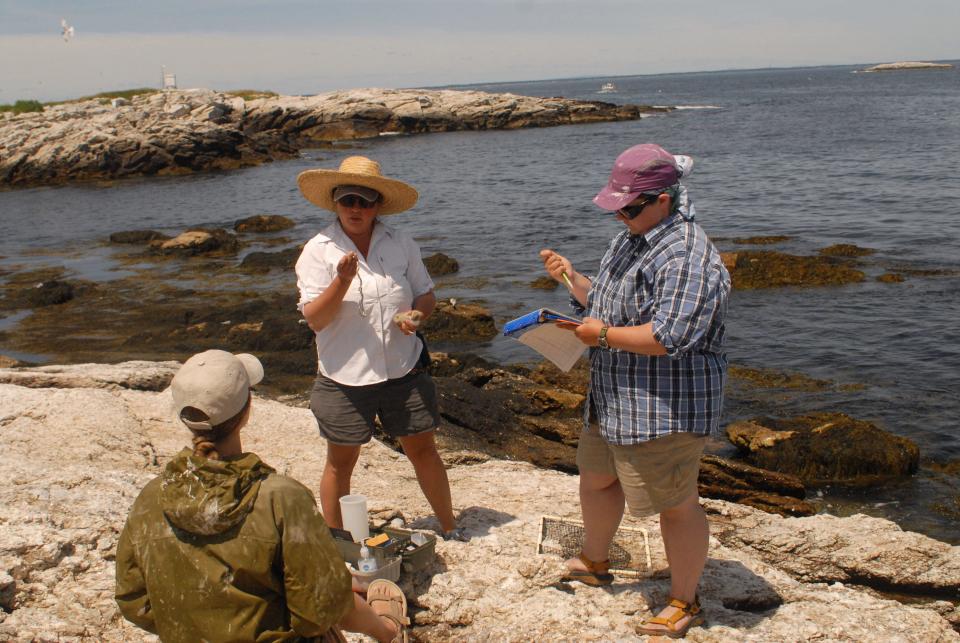
Technicians Smith and Rizza, who studied birds and marine biology in college, tell stories about protecting their tea in the morning and avoiding meals with white cheese — just to be sure there's no confusing bird excrement for something else.
"You've got to watch your coffee," laughed Craig.
Attention birdwatchers: Check out these locations to go birdwatching on Cape Cod
The trio lives in a former lighthouse caretaker's cottage, a little weathered house that serves as their "bird-free" retreat, if there is such a thing on the island. On a recent afternoon, they ate leftover lasagna and peanut butter sandwiches at a picnic table, strategically located away from any nesting areas. A wet suit hung out to dry on a clothes line.
They don't blink an eye at the constant threat of sharp beaks or the ceaseless screaming. Just like the crash of waves at night, they say the sound is relaxing when drifting off to sleep.
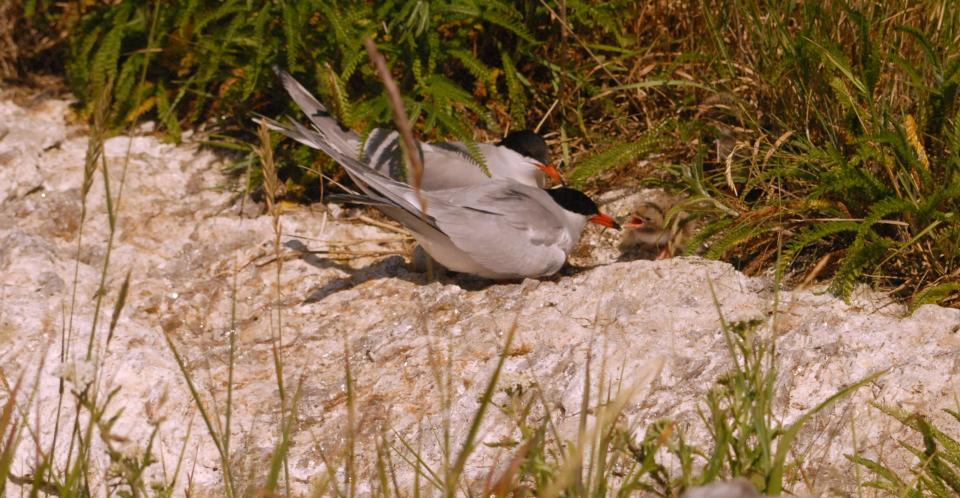
Wide-brimmed hats are essential on the island. A walk to the composting toilet requires an umbrella. Despite the overhead precautions, Craig, Rizza and Smith are covered in dried, crusted bird poop — on their baseball caps and the shoulders of oversized shirts they wear for coverage. It's all part of the experience.
More on birds: Camouflaged in marshes, green herons use bait to catch fish
"It's like, I got poop all over my face and they're pecking my head," Rizza laughed, "but I'm holding a baby bird, so it's worth it."
Amazingly, they aren't exactly scrambling for time off. All three team members admitted they get "FOMO" — fear of missing out — when they leave the island.
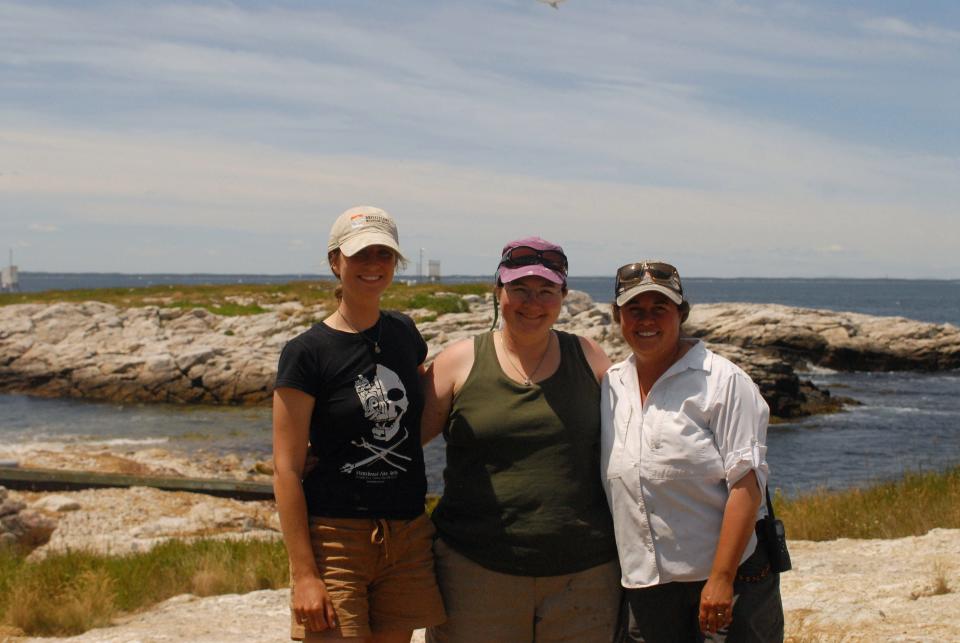
One of their major tasks is banding the terns on White Island and next door Seavey Island — a process in which they attach small metal bands associated with unique identification numbers issued by the U.S. Fish and Wildlife Service.
"We know the bird for life," said Craig.
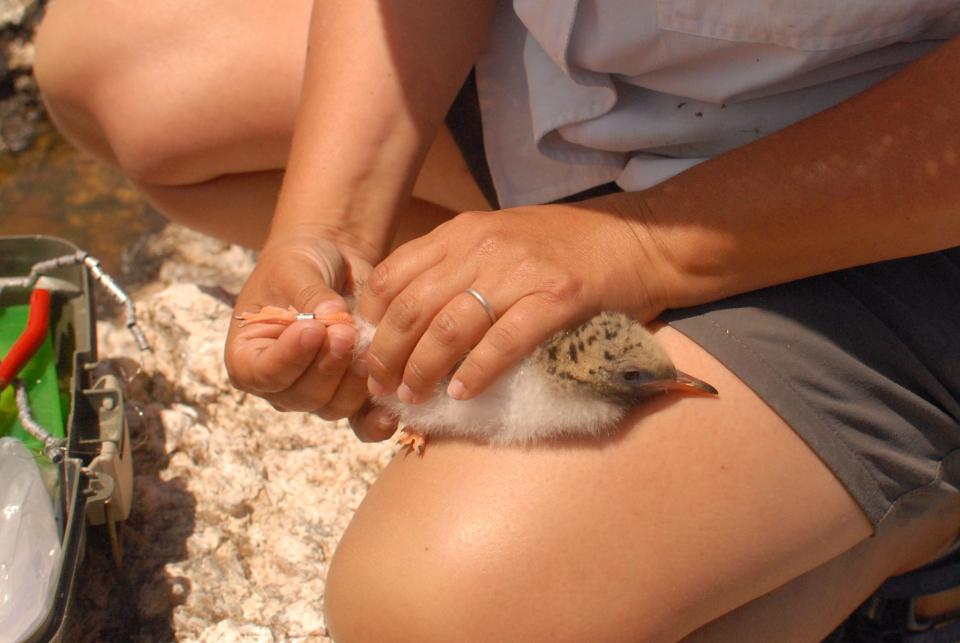
Approaching a nest of newborn chicks, the researchers are regularly subjected to the terns' wrath: pecking, defecating and "angry" noises, which differ from their typical melodies, said Craig. She crouched in bravery as a tern flew beak-first into her straw hat.
"They're good parents," said Smith. "That's why they're acting that way."
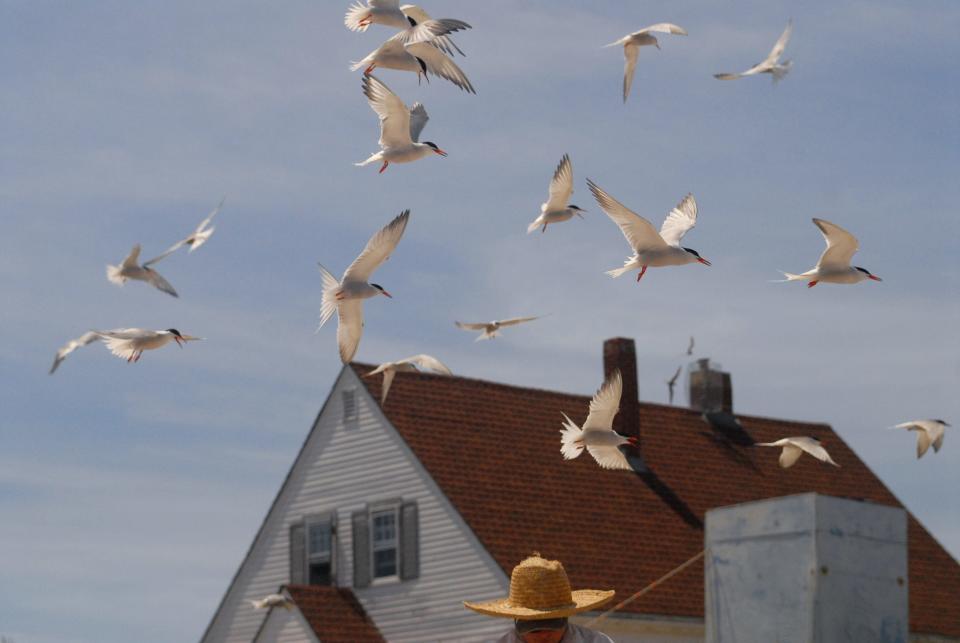
Craig returned holding three baby terns less than 2 weeks old. Craig took their weight and measured their wingspan, as Rizza and Smith recorded the numbers she read aloud. Overhead, the parents continued to scream.
Tern nesting colonies in New England
Terns return to New England May through August, during which time they lay their eggs and raise their toddlers.
"They are the extreme end of parental care," smiled Craig. "They are intent on protecting every chick, every year."
New England sees mostly common, arctic and roseate terns, the latter of which is a threatened species under the federal Endangered Species Act.
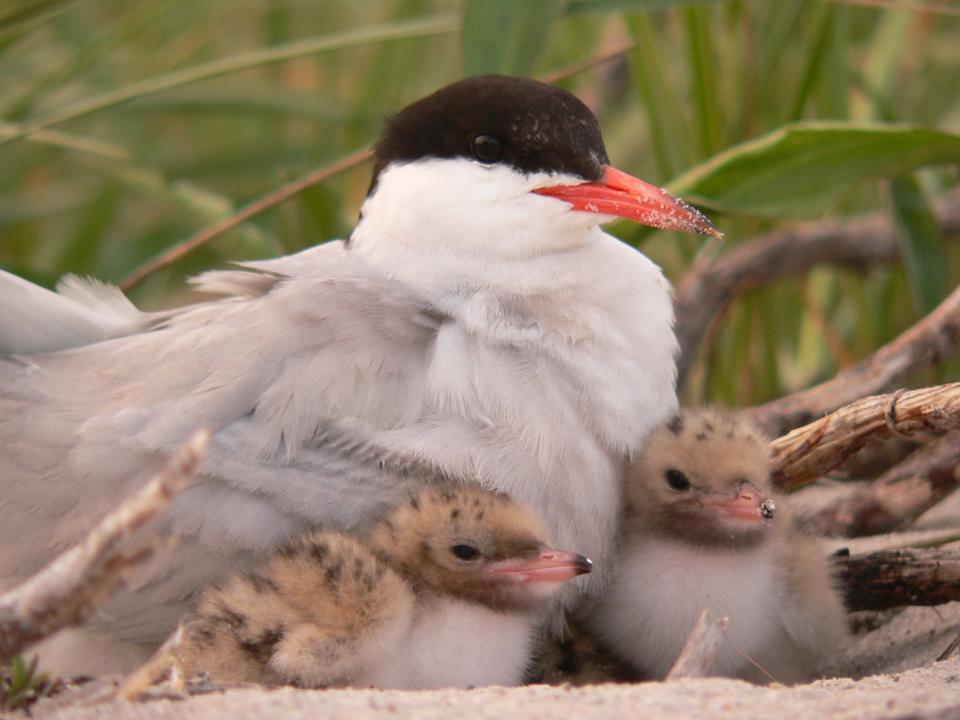
This breeding season on the Isles of Shoals started with 6,000 to 7,000 adult terns. At Monomoy National Wildlife Refuge off Cape Cod, the tern population is more than quadruple that.
Managed by the U.S. Fish and Wildlife Service, the Cape refuge stretches more than 7,600 acres from Chatham into the Nantucket Sound. It supports the largest nesting colony of common terns on the Atlantic seaboard, some years exceeding 13,000 pairs — or 26,000 individual birds.
From bald eagles to salt marsh sparrows: Rhode Island's Bird Atlas tells us about important changes
Hope may be a longshot: Erosion threatens Monomoy National Wildlife Refuge's Chatham base
Among the tens of thousands of terns they see each year, said Refuge Manager Rick Nye, they focus primarily on the 20-25 pairs of endangered roseate terns that breed in the colony. Staffers want to protect and grow the roseate tern population so the species ultimately comes off the federally endangered list.
"We're out there counting and identifying nests, identifying pairs," said Nye. "How many eggs are in that nest, how many of those eggs hatched? How many of those hatchlings eventually grow up and fly away?"

Once hunted, tern colonies are being restored by humans
Tern populations have seen major fluctuations over the last century. According to the Gulf of Maine Seabird Working Group, terns and other seabirds were hunted as popular decorations for hats. Craig recalled seeing photographs of late-1800s women wearing hats with "whole terns" affixed to the side.
With the Migratory Bird Treaty Act of 1918, seabird populations in New England began to recover, but at different rates. Terns in particular are continuously impacted by human development and predation, putting their breeding habitats at risk.
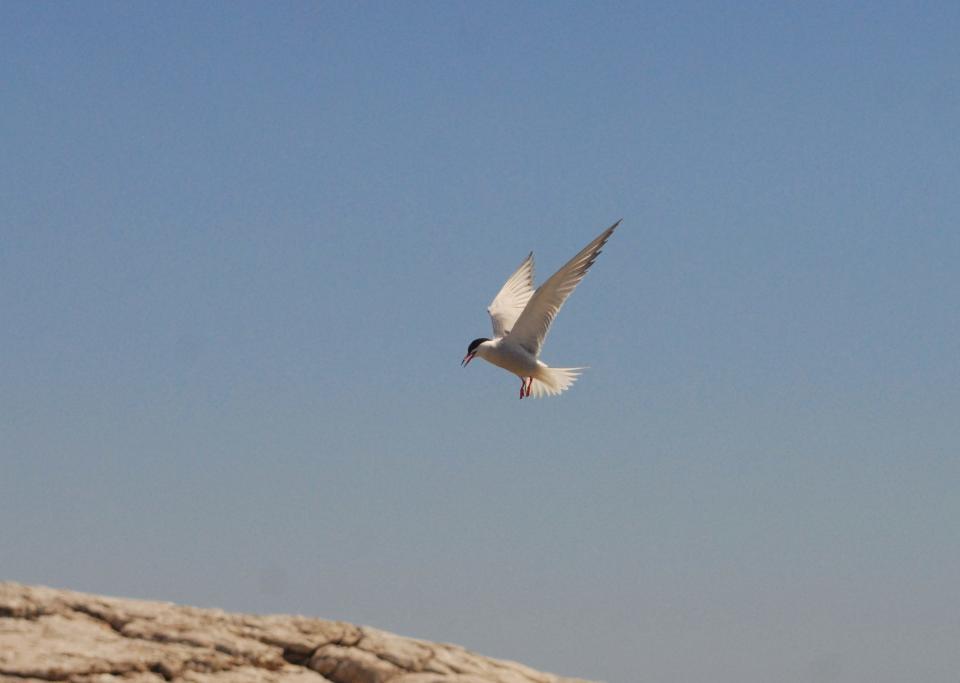
Conservation success: Interior least tern soars off endangered species list after 35 years of protection
Over the last several decades, breeding colonies have been restored up and down the region's coast, but require oversight by humans.
New Hampshire Audubon and New Hampshire Fish and Game started the managed tern colony at the Isles of Shoals in 1997 and later handed the reins over to Shoals Marine Laboratory.
While the public can access the nearly 200-year-old White Island lighthouse on site, the breeding colony is off limits. A sign with a red banner warns people that terns are protected under state and federal laws, and killing, harassing or disturbing them can result in arrest or fines.
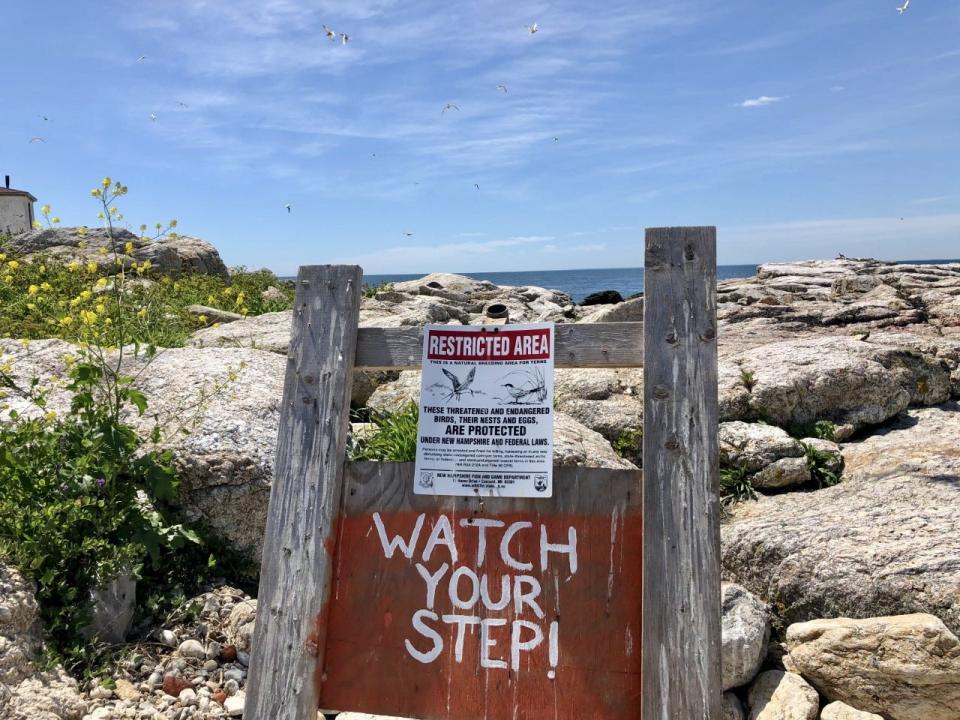
Craig called terns "management dependent," meaning they require human intervention to create opportunities for them to nest.
On Cape Cod, Nye said the "main thing" the Monomoy National Wildlife Refuge does is "keep (terns') habitat available to them."
"If they don't have the space on their preferred substrate, then they won't do well," said Nye. "We have large sections of beach that are blocked off from any human use. We're providing a space that's not occupied by anything other than these birds."
It's a complicated concept in the conservation world, what some might call "artificial conservation."
But Seavey argues that humans have a responsibility to maintain spaces for terns, because of the few safe places left to breed, largely due to environmental degradation, human activity and competition with other seabirds.
"There has been somebody on that island since they started in the '90s," said Seavey. "If we walked away from that colony, it would die."
This article originally appeared on USA TODAY NETWORK: Terns off NH, Cape Cod teach scientists about our changing oceans

